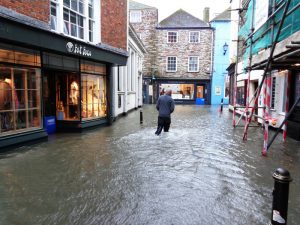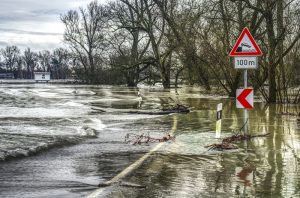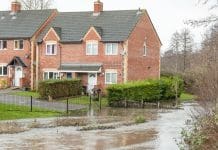Flood risk and control is something that should be considered by everybody. Chris Loaring, Head of Consultancy at Argyll discusses the situation and available resistance and resilience measures
According to the Environment Agency, approximately 5.2 million properties in England are at risk of flooding. They also report that the expected annual damages to residential and non-residential properties in England at risk of flooding from rivers or the sea is estimated at more than £1 billion.
It’s a big issue and one that we believe is only going to become more prominent.
Any time and almost any location
 The difficulty is that flooding can occur at any time and in almost any location: a common misconception is that flooding only happens if the site is located near to a tidal or flowing water source, such as the sea, river, or alternatively is situated on low-laying ground. This unfortunately isn’t the case.
The difficulty is that flooding can occur at any time and in almost any location: a common misconception is that flooding only happens if the site is located near to a tidal or flowing water source, such as the sea, river, or alternatively is situated on low-laying ground. This unfortunately isn’t the case.
In fact, surface water flooding, which happens when heavy rainfall occurs and overwhelms the local drainage systems is an increasing risk. The Environment Agency suggests that three million properties are currently at risk of surface water floods, and this is likely to grow, particularly when new developments are built. It not only creates further demands on existing drainage systems but also means there is less green space where waters can naturally drain to.
How can you determine your sites flood risk – what data is out there?
Firstly, it’s important to undertake some form of site assessment to understand what environmental risks may be present, so if any are identified you can incorporate risk mitigation measures in your overall plans.
To check your risk, you have three main options: one is open data and the Environment Agency’s flood maps (or Scottish Environment Protection Agency if you’re based in Scotland). This assesses most of the main types of flooding: river, coastal, surface, or reservoir. The only potential downside is the scale is such that it is difficult to tell whether a specific location is affected by this risk, particularly if it is on a boundary.
The second option, which offers more assurances, is to obtain a flood report for the specific site or property address. There are various levels of reports available today that analyse data from a range of specialist sources and organisations. They provide a view on whether further more detailed investigations are required.
The third step is to speak to an environmental or flood risk consultant for a Flood Risk Assessment. They will be able to provide an onsite assessment and offer practical solutions on what steps should be taken, if flooding cannot be ruled out.
What types of flood risk can be analysed?
There are six main classifications of flooding: surface water, river, coastal, groundwater, dam break and canal or reservoir failure. As such, it is possible for sites in any location to carry some level of flood risk. There is data available on all of these flood risk types.
How accurate is the data used in the models?
They are sufficiently accurate as they provide information on potential depths of water following a prescribed period of rain fall or high tides. This is important when considering what steps may need to be implemented when putting flood resilience or resistance measure in place.
How can we predict what risks will occur over time?
 Flood risk modelling continues to evolve and is improving all the time. Consultants also take into account historic data, which helps when predicting where flooding will occur in the future. One of the main issues in urban areas, is that green spaces are being concreted over; gardens tarmacked, new developments built and, as a result, more water is flooding into the drainage system. Where practical, the construction of sustainable urban drainage systems alongside new developments, will offer somewhere for surface water to drain in order to help alleviate flooding.
Flood risk modelling continues to evolve and is improving all the time. Consultants also take into account historic data, which helps when predicting where flooding will occur in the future. One of the main issues in urban areas, is that green spaces are being concreted over; gardens tarmacked, new developments built and, as a result, more water is flooding into the drainage system. Where practical, the construction of sustainable urban drainage systems alongside new developments, will offer somewhere for surface water to drain in order to help alleviate flooding.
Resistance and Resilience Measures – what’s available?
There are many resistance measures (to keep water out of a property) as well as resilience tips (adapting a property so it can quickly recover from flooding) available to developers today.
The first step when developing any new properties is to incorporate resilience measures as part of the build, so for example, installing electrical sockets, heating boilers or service meters higher up walls so they are less likely to be breached if a flood occurs.
Also, flood waters can find their way through the smallest of spaces, therefore consider measures that may prevent water from entering via airbricks or plumbing outlets. There are many products available today to support this.
Ultimately, it therefore pays to do your research at the outset to determine exactly what risks are present on any site or plot of land earmarked for development, to ensure it is not blighted in future.













